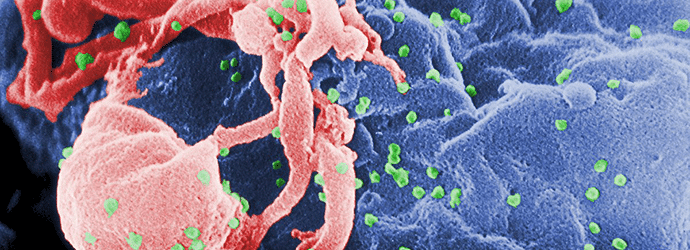How to Preserve Microorganisms: Store Your Cells Better
We must preserve microorganisms for research continuity and to prevent frustrating delays. Here are several reliable ways to do it.
Join Us
Sign up for our feature-packed newsletter today to ensure you get the latest expert help and advice to level up your lab work.
Search below to delve into the Bitesize Bio archive. Here, you’ll find over two decades of the best articles, live events, podcasts, and resources, created by real experts and passionate mentors, to help you improve as a bioscientist. Whether you’re looking to learn something new or dig deep into a topic, you’ll find trustworthy, human-crafted content that’s ready to inspire and guide you.

We must preserve microorganisms for research continuity and to prevent frustrating delays. Here are several reliable ways to do it.

Learn the basics of how to passage cells in culture with this easy-to-follow guide. While the specifics change per cell line, the basics remain.

Biosafety cabinets keep your work safe from contamination, and you safe from your work. So here are 12 tips for Working in a biosafety cabinet!

Do you know what each ingredient in cell culture media does? Read on to take a look at the common ingredients and break down their roles.

Not sure what we mean by cell passage number? Confused about how to calculate it? Wondering if there is a maximum number? We explain it all.

Want to use a cell line but not sure where to start? Or perhaps you’re just curious about the most commonly used cell lines. Our top 5 most commonly used cell lines will help you get a feel for the cells that many researchers turn to.

While using serum in cell culture can keep your cells healthy and happy, there are some notable downsides. We discuss the pros and cons of using serum in cell culture media and how to remove it if you want to eliminate it from your workflow.

Cell confluency can affect cell behavior and growth. Find out what confluency is, how to measure it, and why it is a crucial consideration for your experiments.

HEK293 cells are one of the most commonly used cell lines. But what are they? Why should you use them? And what does the ‘293’ mean?

Feeder cells – your solution to difficult-to-grow cell problems. Find out what they are, why to use them, and how.

There is an overwhelming selection of cell lines available, make sure you pick the right one for your work using our tips.

You might have seen one of the many anti-drug ads the 80s had to offer (including this delightful message from Robocop) and rightfully steered clear of drugs. But when it comes to biology, we use in vitro drug treatment for many experimental purposes, including testing anti-cancer treatments or synchronizing the cell cycle. If you are facing your first in vitro…

The use of viral delivery systems to transduce cells for gene and protein investigations has become prominent over the last 20 years. In particular, the use of lentiviral vectors permits stable expression of your gene of interest. This is all possible with a little bit of nucleic acid magic. Lentiviruses (a genus of retrovirus) express reverse…

You’ve cultured your cells and completed your treatments, now it’s time to harvest them and proceed to the downstream effects. Cell lysis is the crucial stage that determines if your experiment has a chance of producing the data that you have been waiting for. Part of the starting biological material is inevitably lost on each…

The cells I work with are special — they’re stem cells. This means that when it comes to deciding their ultimate fate, they’re still sitting on the fence. This ability is great for identifying pathways of cellular development and differentiation. It also serves research into tissue regeneration and human disease. But how can we make…

Whether you work with human cell lines or microbes, their growth is governed by the same principles. I invite you to learn about something that lies at the base of any work with cell culture, whether cells have circular or linear chromosomes: the S-curve of the population growth. The length of each phase depends on…

Mammalian cell culture techniques are not something you learn from a book, per se. And because of this, it is important to be properly trained, especially in sterile techniques. It is important to keep your cell lines from contamination and just as important to keep yourself safe. Nevertheless, people tend to do things a little…

Primary cultures of rodent (rat and mice) neurons are widely used for disease modeling and studying cellular mechanisms in neurobiology, using a variety of techniques including neurobiology imaging. If you are in this field and need help with protocols and batch-to-batch variability of your dissociated primary rodent neurons, read further below. Also, consider watching several…
Cell counting is the bane of existence of many researchers. Countless hours spent in front of the microscope with a haemocytometer on the stand and a manual tally (or “clicker”) in hand can be really daunting. Not to mention that no one will ever double check your count if you don’t take a picture. Those…

Tissue culture can sometimes seem like a black art. Too careful—your cells go down. Not careful enough—your cells go down. A butterfly flutters its wings in the middle of the Atlantic Ocean—your cells go down. It’s annoying, it’s frustrating, and there are times (and I’m speaking from personal experience here) that you’ll end up chucking…

An anti-cancer drug or antibody drug conjugate (ADC) screening assay is the first step to establish the utility of a drug candidate in killing cancer cells. Nevertheless, these assays are time consuming and tedious. The purpose of this article is to make things easier when you are required to set up these in vitro screening…

While using human clinical samples in your research can provide robust and heterogeneous results applicable to larger portions of the population, working with these samples presents its own set of challenges. Here are some tricks I have learned to help isolate and grow your cells of interest while eliminating stromal, blood, or other undesired contaminants….

Anchorage-independent assays test the ability of cells to grow independent of a solid surface. The assay is used to check the malignant potential of cancer cells. Cancer researchers generally do this experiment for any kind of confirmation of the oncogenic potential of an oncogene or a tumor suppressor in cancer cells. However, we do encounter…

Sonication is mostly used during preparation of protein extracts to help break apart the cell. Although most lysis buffers have buckets of detergent that lyse cell membranes, sonication just gives an extra hand in breaking everything apart. Sonication also breaks up, or shears, DNA in a sample—preventing it from interfering with further sample preparation. Have…

So you want to work with mouse B cells? Primary murine B cells are a difficult, yet fascinating system to work with and can help deepen your understanding of an immunological system. You can study many things with primary B cells, including: These cells can be fickle to work with, but here are a few…

Mammalian cell culture techniques are not simple, and culturing the cells requires a lot of maintenance as well as patience. In addition, doubling times compared to bacterial cells can take days instead of hours, which is most evident when contamination occurs. However, implementing small-scale hollow fiber bioreactors for culturing mammalian cells can save a lot…

Three dimensional cell culture mimics the extracellular matrix (ECM) that offers the structure and support for cells in vivo, thus creating the complex architecture and network required for cellular communication. For 3D cell culture beginners (or enthusiasts), the information available may seem overwhelming. It sure was for me. But it can be simplified. For example,…

Even in the most basic applications, fluorescence microscopy can be a very powerful technique. Simply put, the ability to actually see the biology you are interested in cannot be matched in directness. Often, the aim of fluorescence microscopy is to observe the effect of an experimental manipulation. Ultimately, you would like to know that the…

Flow cytometers and cell sorters were designed with blood cells in mind. This means that commercial cell sorters are optimized for sorting cells typically smaller than about 20 µm in diameter. However, it turns out that many cell types, including those of mammals, are larger than 20 µm. So what are your options if you…
The first thing you learn about culturing cells is proper aseptic technique and avoiding contamination. After that you’ll learn all the ins and outs of culturing your project’s specific cell line(s). What may not have been covered, is co-culturing, and I don’t just mean ethnic diversity in the lab! Co-culturing is the indirect or direct…

Human bronchial epithelial cells (HBECs) are a challenge to culture. As highly specialised cells that exist in carefully ordered multi-layered structures, they are especially fickle and finding optimum conditions to keep them happy is tricky. The cultures are also extremely sensitive to tiny changes in routine or environment. However, there are certain basic principles that…

Producing lentiviral or retroviral vectors is theoretically fairly straightforward. However, anyone new to viral vector work is usually confronted with vast amounts of confusing information. It seems that anyone who has ever made a lentivirus has their own protocols and is adamant that their method is the best one to follow. In reality, there are…

We have to rely on artificial systems to test our hypotheses and often have to come up with original set-ups to investigate specific problems. One of these creative inventions is the use of supported lipid bilayers.

In the sci-fi novel Terminal World by Alistair Reynolds, a planet consists of zones with defined characteristics of matter interactions on a subatomic level. These conditions permit different levels of technology sophistication in various zones. For example, in the “Steamville zone” nothing more complicated than steam engines works – electronic schemes fuse irreversibly. Something like…

Do you know about algae and their potential in today’s world? Do you know how to work with algae? Algae are becoming increasingly important in the research world.

Recently we wrote an article about widespread cell culture contamination and how to detect it. This follow-up article will provide practical tips on avoiding cross-contamination in the first place. Be Cautious While Working The first way of cross-contaminating cultures is by accidentally mixing two cultures together, which may lead to an unintended co-culture or the displacement…

While working in a UK university, I met a researcher who loved Italy much more than the UK. I asked her why she had left her favourite country. She told me that before coming to the UK, she had a 2-year fellowship in Italy where she was getting some promising results and had the chance…

Apart from lung cells, surprisingly few cells are ever exposed to 20% oxygen, which is one of the reasons it’s hard to get in vitro cell cultures to behave. Read more about whether 20% oxygen is always the best level for cell culture and why it became the standard amount to use.

Mammalian cell culture can easily deplete grant funds. Sometimes you can alter protocols to use expensive reagents sparingly. Here are a few tips!

The eBook with top tips from our Researcher community.